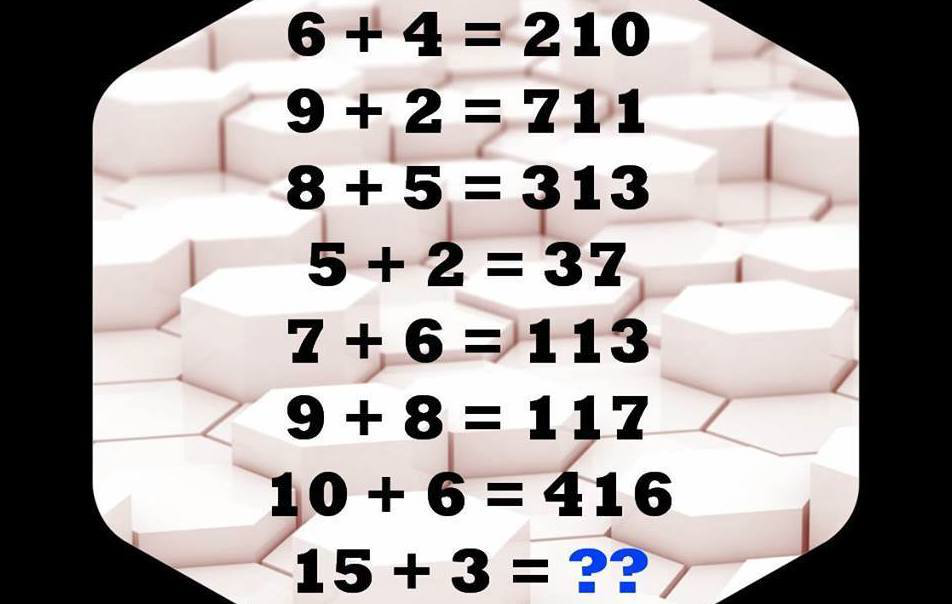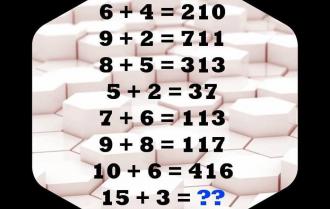Solve Math Puzzle
If 6+4=10, 9+2=711, 8+5=313, 5+2=37, 7+6=113, 9+8=117, 10+6=416 then 15+3=?Correct answers: 223
The first user who solved this task is Donya Sayah30.
#brainteasers #math #riddles

Stomach ache
A little girl went up to her mother one day while holding her stomach saying, "Mommy, my stomach hurts."
Her mother replied, "That's because it's empty. You have to put something into it!"
She then prepared a bowl of soup. Later that day the pastor and his wife came over for dinner.
The pastor began to feel bad. Holding his head he said, "I have such a terrible headache!"
The little girl looked up at him, giving him the sweetest smile that any little child could give. Then she said:
"That's because it's empty. You have to put something into it!"
Found on http://www.crochetnmore.com posted on May 15, 2005

